Cap Palos
24/25th
October 1919
Refloated
1st October 1920
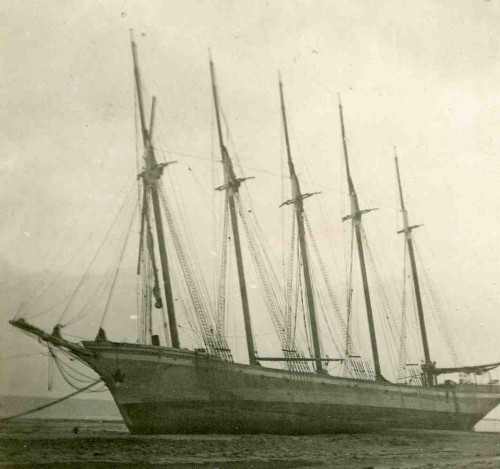
Built by William Lyell
and Co in Vancouver, Canada as
part of a fleet of six the 1,500ton
schooner "Cap Palos"
was on her maiden voyage. At 235
foot long, 46 foot beam and 20
foot draught with a 114hp oil
burning auxiliary engine driving
two bronze propellers the "Cap
Palos" must have been an
impressive sight. With her full
sail area of 21,483 square feet
flying the schooner could make
about ten knots. She arived at
Immingham on 23rd August 1919
requiring repairs to her failed
auxiliary engine, but due to a
strike by workers there, a tow to
Hartlepool was arranged by Capt.
Allison Tennant.......
"Early
on Friday morning the Cap Palos a
five masted auxiliary sailing
ship being towed from Immingham
to Harlepool broke away from it's
tug and cast anchor in the Bay.
She was being towed by the tugs
"Cable" and "Symbol"
and near Ness Point the tugs went
ashore. A coble manned by the
five Storms (four brothers) and T.
Moorsom, R. Bedlington, & W.
Smith went to their assistance
and got them off. The tugs left
for Whitby leaving the Cap Palos
at anchor.
With
a gale blowing and dense fog the
Lifeboat "Mary Ann Lockwood"
went out at 10:00am on Friday
morning in answer to distress
signals. The Lifeboat crew were
Cox'n W. Storm, Tom Storm, Reuben
Storm, Oliver Storm, W.Smith, H.Duke,
Thomas Moorsom, Thomas Taylor, W.Beedle,
R.Beddlington, S.Cooper, G.Levith
& O.Olsen. The Lifeboat took
off some of the crew, but was not
able to return to the Way Foot
and so put them ashore at Mill
Beck. The Lifeboat was beached
and remained all night with the
rocket crew.
On
Saturday morning the ship was
still riding at anchor and at 8:00am
tried to sail away but drifted on
to the shore at White Cliff
nearly opposite Stoupe Beck. The
rocket crew under Chief Officer Thompson (below) fired four
times without success as the
vessel was out of range.
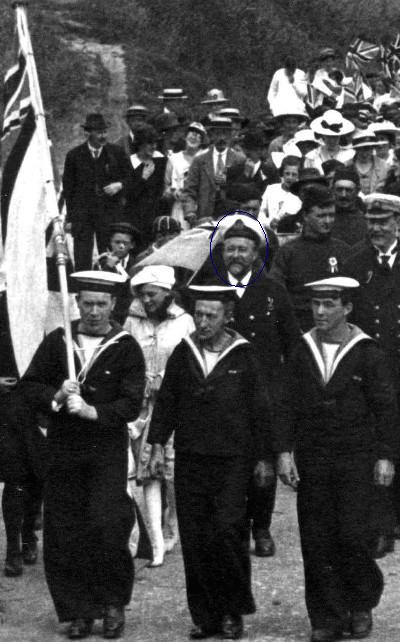
The
lifeboat with four alterations in
the crew J.W.Knaggs, John Knaggs,
G.Duke and W.Screeton was brought
from Mill Beck and took off the
chief mate for medical attention.
At 2:30pm on Sunday the Lifeboat
took the crew back and stood by
expecting the tugss at 3:00pm.
One was observerd about two miles
away at anchor near Ness, but it
steamed back to Whitby. The
Lifeboat took five men back to
the Way Foot. The remaining nine
used the ships boat, but this
capsized on the Flat Scaur,
although all reached the shore
safely. The Secretary of the
Shipwrecked Mariners Association,
Capt. H.Streeting looked after
the crew who were housed in the
Bay Hotel by Mr.Hirst. "
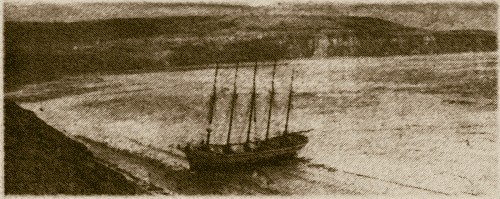
There now seemed little
hope for the Cap Palos in this
exposed position, and it was
reported that quantities of
timber were washing ashore from
her keel. However this was not
the end, she survived the winter,
demonstrating the durability of
wooden hulls. A channel was
blasted in the scuars and she was
refloated on 1st October 1920 and
towed to Whitby for repairs. (The
channel can still be seen on Flat
Scars, picture below.)
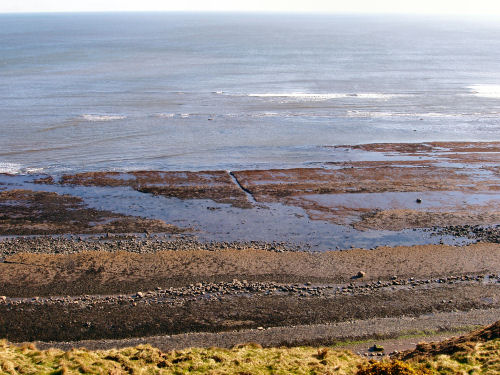
A
large Rats were seen leaving
before the vessle sailed
On 19th November 1920 she
was towed out of Whitby bound for
Blyth but worsening weather near
Staithes forced the two tugs and
their charge to return to Whitby.
While standing off, waiting for
the high tide, the tow ropes
parted as the westerly wind
increased and the helpless
schooner drifted out to sea with
Captain Tennant and her salvage
crew of fifteen still aboard.
Whitby's new motor Lifeboat the
Margeret Harker-Smith was
launched. The Cap Palos was found
eighteen miles out to sea, badly
damaged and unmanagable. Despite
sustaining considerable damage
the Lifeboat was able to rescue
all on board, including the ships
cat, and return to Whitby leaving
the schooner the sink or break up.
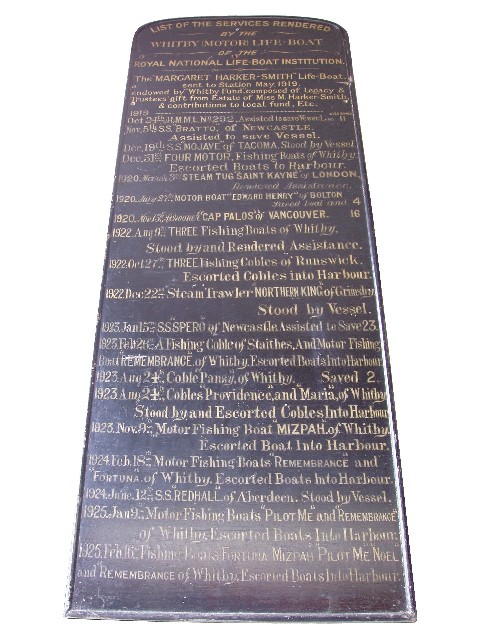
A
few days later the hull of the
Cap Palos was found waterlogged
but floating off Robin Hood's Bay,
it was taken in tow by a steam
trawler. Near Scarborough the
wreck broke in two, the larger
bow section was lost, but the
stern was towed to Cornelian Bay,
near Scarborough, and beached
where in was subsequently broken
up.
Auxiliary
Engined Five masted Schooners
built by The William Lyall
Shipbuilding Co., North Vancouver
in 1918
141191
Cap Nord, 1468
tons, later became the Andromeda.
141196
Cap Palos, 1468
tons
141210
Cap Horn, 1469
tons
141212
Cap Finisterre,
1471 tons
141220
Cap Vert, 1472
tons
141300
Cap Vincent, 1471
tons
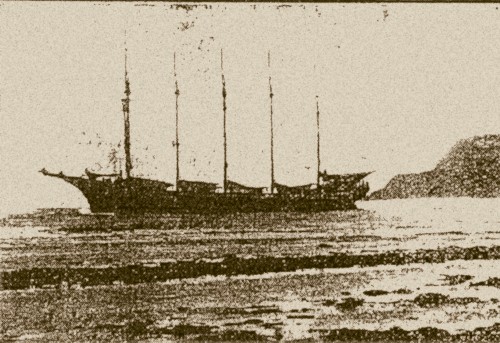
|